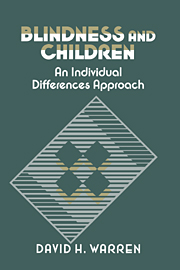Part III - Adapting to the social world
Published online by Cambridge University Press: 02 December 2009
Summary
The newborn human infant does not exhibit behaviors that can be considered truly “social.” Gradually, the infant becomes responsive to specific people and develops emotional bonds to them. These are the beginnings of social and emotional relationships that will develop and mature throughout the individual's lifetime. As the infant develops, parents and others begin to impose the demands of “socialization”; that is, they expect the child to modify his or her behavior in response to their expectations and to assume increasing responsibility for self-care.
Of course, language is a significant medium of social interaction; we will examine its development as a tool of communication. The roots of language lie in infancy, though, and it is necessary to look at prelanguage communicative behaviors. Increasingly, the child faces requirements to monitor his or her own behavior without being continuously directed by others. At some point in the first few years, the child enters into social relationships that extend beyond the family, and whether this is in child care, preschool, or a school setting, additional demands are placed on the child's capacities for interaction and adaptation to the social situation.
As the child progressively adapts to the demands of socialization and independence, stable characteristics of self emerge. These are seen in the consistencies in behavioral and attitudinal traits that affect the nature and quality of the child's interaction with other people as well as his or her pattern of self-conceptualization and self-regard.
- Type
- Chapter
- Information
- Blindness and ChildrenAn Individual Differences Approach, pp. 205Publisher: Cambridge University PressPrint publication year: 1994



